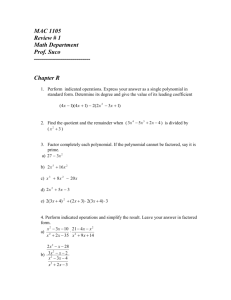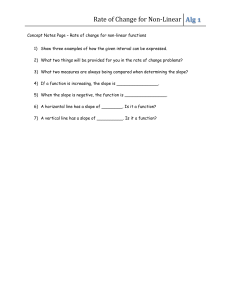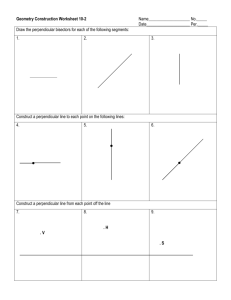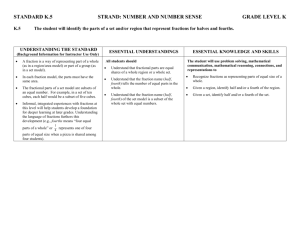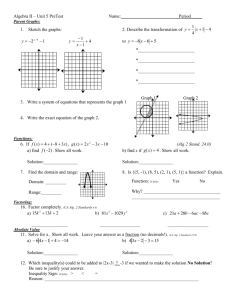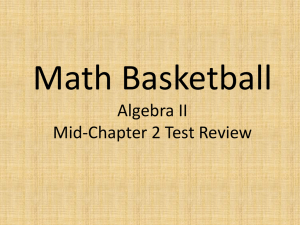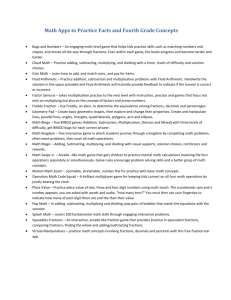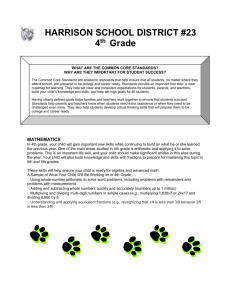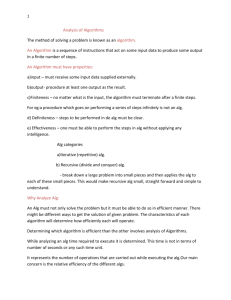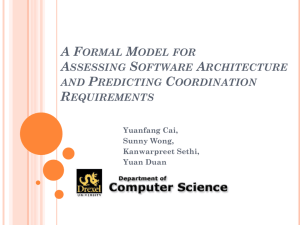Complex Fractions and Some Polynomial Functions Teacher: Labor
advertisement
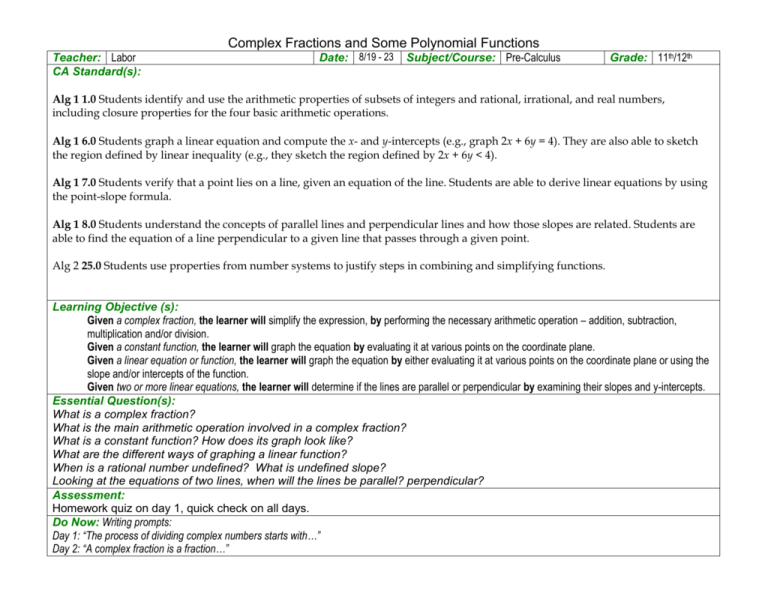
Complex Fractions and Some Polynomial Functions Teacher: Labor CA Standard(s): Date: 8/19 - 23 Subject/Course: Pre-Calculus Grade: 11th/12th Alg 1 1.0 Students identify and use the arithmetic properties of subsets of integers and rational, irrational, and real numbers, including closure properties for the four basic arithmetic operations. Alg 1 6.0 Students graph a linear equation and compute the x- and y-intercepts (e.g., graph 2x + 6y = 4). They are also able to sketch the region defined by linear inequality (e.g., they sketch the region defined by 2x + 6y < 4). Alg 1 7.0 Students verify that a point lies on a line, given an equation of the line. Students are able to derive linear equations by using the point-slope formula. Alg 1 8.0 Students understand the concepts of parallel lines and perpendicular lines and how those slopes are related. Students are able to find the equation of a line perpendicular to a given line that passes through a given point. Alg 2 25.0 Students use properties from number systems to justify steps in combining and simplifying functions. Learning Objective (s): Given a complex fraction, the learner will simplify the expression, by performing the necessary arithmetic operation – addition, subtraction, multiplication and/or division. Given a constant function, the learner will graph the equation by evaluating it at various points on the coordinate plane. Given a linear equation or function, the learner will graph the equation by either evaluating it at various points on the coordinate plane or using the slope and/or intercepts of the function. Given two or more linear equations, the learner will determine if the lines are parallel or perpendicular by examining their slopes and y-intercepts. Essential Question(s): What is a complex fraction? What is the main arithmetic operation involved in a complex fraction? What is a constant function? How does its graph look like? What are the different ways of graphing a linear function? When is a rational number undefined? What is undefined slope? Looking at the equations of two lines, when will the lines be parallel? perpendicular? Assessment: Homework quiz on day 1, quick check on all days. Do Now: Writing prompts: Day 1: “The process of dividing complex numbers starts with…” Day 2: “A complex fraction is a fraction…” Day 3: “The set of whole numbers in NOT closed under division because…” WHOLE GROUP Do Now: Writing Promts Lesson: Note-taking (I Do, You Do, We Do): Complex Fractions, Constant Function and Some Polynomial Functions Quick Check DIRECT INTRUCTION STATION Unit 2: Polynomial Functions Notes: Students use their composition notebooks to copy notes. Students then answer guided exercises and then answer problems on their own. Activities: *Note-taking *Pair-share *Mini-whiteboards *Thumbs up, thumbs down *I Do, You Do, We Do *Quick checks COLLABORATIVE STATION Exploration: Students will be assigned to groups of 3 or 4 depending on the result of quick checks or verbal assessments. Students will be working on complex fractions. Group Roles: Leader: Moderates the whole group and ensures that each member is doing his/her role Time Keeper: Ensures that each member is on efficiently on track to accomplish the task INDEPENDENT STATION Homework Quiz #4: On day 1, students will be given problems from assigned homework from the previous day to check for comprehension. Activity: Each student is going to create a student-friendly brochure on complex numbers. Individual work: Each student is assigned homework to build on the concepts discussed in class. Recorder: Records all responses and makes sure every one in the group shares the same data Day 1 HW: pA44 #28 - 32 Day 3 HW: p41 #46 – 70 (even only) Reporter: Shares what the group learned from the activity *All HW answers need to be in a composition notebook Address possible misconceptions: Adding or subtracting fractions with different denominators. Slope of a vertical line versus slope of a horizontal line. Division by zero error.
